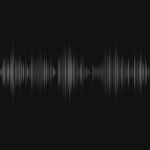 Adobe Community
Adobe Community
- Home
- Audition
- Discussions
- Re: Help me please to high cut all the frequencies...
- Re: Help me please to high cut all the frequencies...
Help me please to high cut all the frequencies above 22k
Copy link to clipboard
Copied
Hi
I have recoreded several audio saved in flac 16bit at 44.100
well I want to cut all the frequencies above 22k
Is there only a tool to do it? Is the parametric EQ?
Can somebody help me how to do it and maybe a screenshot
I have searched aound the net , i have found only this tutorial
thanks
Copy link to clipboard
Copied
If you have audio saved at 44.1k then by definition (the Nyquist limit) you won't have any audio above 22kHz anyway, so it won't be possible to remove it!
Copy link to clipboard
Copied
Hi SteveG
ok , may I know the best tool in audition cc to cut all the frequencies above 15k ?
thanks
Copy link to clipboard
Copied
Scientific Filter. Choose the Hiss Cut ((above 10kHz) preset and change the cutoff frequency to 10,000Hz and the Order to 3. The reason for doing this is that this will give you a relatively smooth roll-off without adding artifacts that you'd almost certainly get if you had a more 'abrupt' setting. Don't worry about the cut-off frequency appearing to be low - the graphic display will give you a better idea of what's happening.
Copy link to clipboard
Copied
Hi Steve
I have rip/recoreded some vinyls and it's hard but I can hear the record player machine noise ,it's a hum i guess of the mechanical parts ,because I have cleaned from clicks/pops and noise
I can hear only with good headphones and high volume
I have read that high cut frequency about 20 or 22 should fix it
thanks
Copy link to clipboard
Copied
A hum is more likely to be lower frequencies.
Copy link to clipboard
Copied
hi
have you notice such noise at high volume of the mechanical parts of the records player?
thanks
Copy link to clipboard
Copied
I think you misread it. This would be a high pass filter set to 20 or 22Hz! This would allow everything above the frequency you've set to pass though.
If you go back to the Scientific Filters and look in the preset list, you'll find one that says 'Remove Subsonic Rumble' - try that; it's a classic High Pass filter.
Copy link to clipboard
Copied
Hi
I have watched this video at minute 23:01 , he said to remove the hum of the record player , high pass
and he say at minute 22:25
Thanks Steve
Copy link to clipboard
Copied
If you look at this grab from that video, you'll see it is 20Hz NOT 20KHz
Copy link to clipboard
Copied
Hi
but i have always tought high pass filter is used to cut all the high frequencies above x Hz
he is using audacity but the audacity high pass fileter at 20.0 what does cut?
does the frequencies under the 20.0hz ? From 0 to 20hz?
maybe it's the term high pas filter that push me to think about the high frequencies
thanks
Copy link to clipboard
Copied
It's very simple - high frequencies pass (i.e. remain), inferring that low ones don't. They've always been referred to like this! And that goes across all software (and come to that, hardware as well).
Copy link to clipboard
Copied
Hi Steve
well , I got it , in audacity high pass remover remove low frequencies
but if i want to remove high what tool should i use to remove them ?
in audacity? and in audicion there is only Scientific Filter ?
thanks Steve, always kind and simple in your answer!
Copy link to clipboard
Copied
It shouldn't come as too much of a surprise to you to know that there are also low pass filters... can you guess what they do? If you look in Audition's Scientific Filters plugin, you'll see a button under the graph that says 'Modes'. If you look in there, and select 'Low Pass', the difference is immediately visible on the graph. Same goes for filters that combine both - Band Pass and Band Stop. Selecting each will again show you the difference on the graph.
Yes, this is the main Filters plugin for Audition, and it can do a lot. But most of the time, you wouldn't need to use it. For more practical purposes you'd use the Parametric EQ, but that has a different function really - it's used for shaping sound, rather than just filtering, although it's also quite capable of doing filtering jobs too. The last remaining filters are the FFT and Notch filters - only used for special purposes. You'll get the idea if you look at the presets in the FFT filter - it can do good effects. The notch filter is essentially a repair tool used for getting rid of hums, etc.
I'm not really going to talk about the graphic EQ filters, except to say that they are gloriously inaccurate, and introduce phase artifacts. Basically, don't use them.


